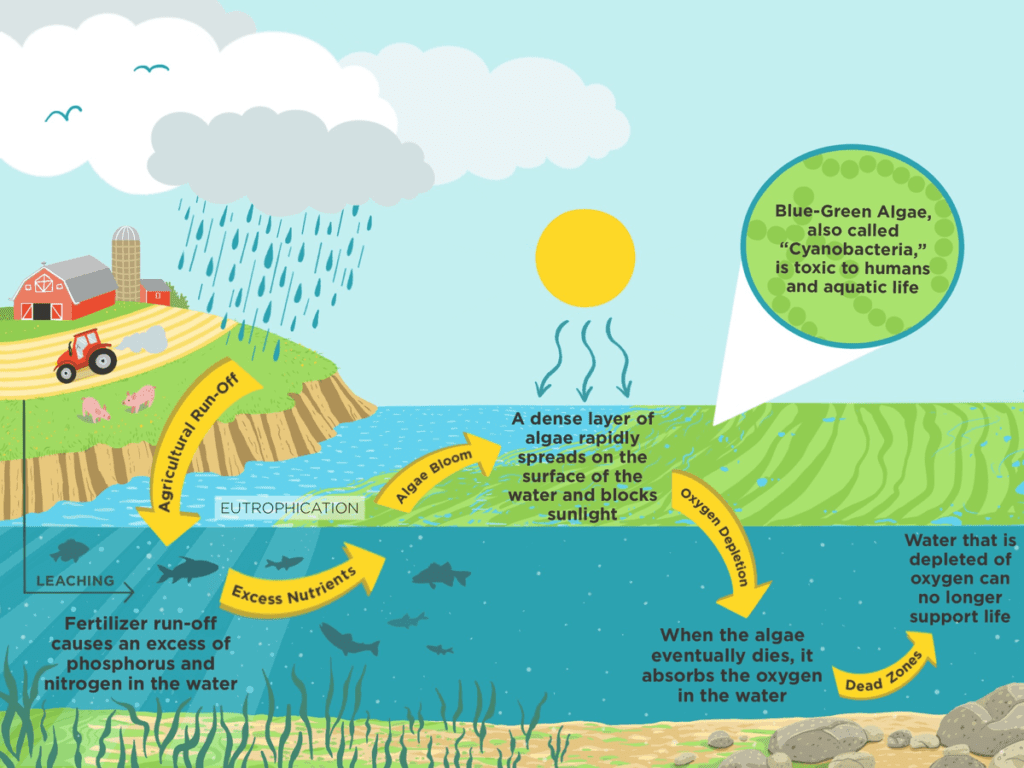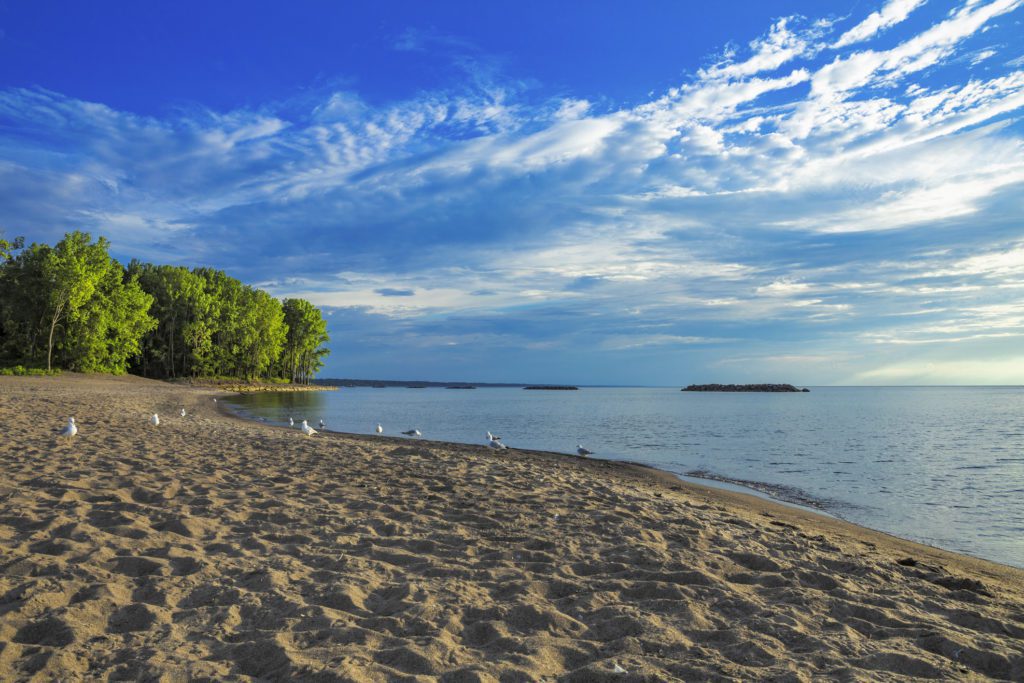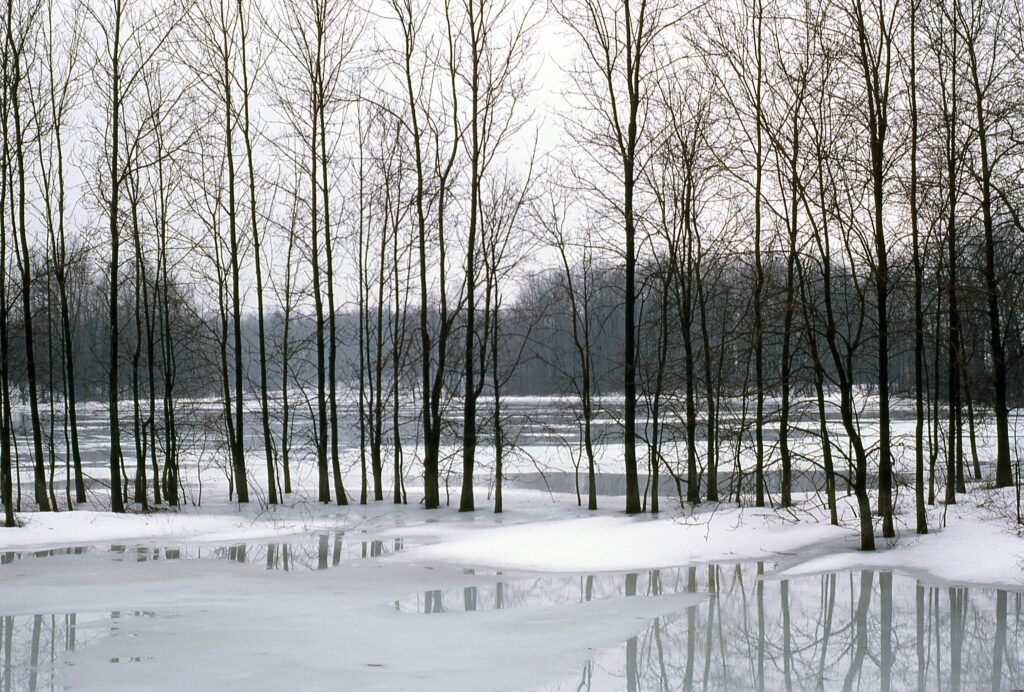Lake Erie is experiencing annual toxic algae blooms that are primarily caused by nutrient pollution from agricultural runoff. These blooms pose a serious threat to the lake’s ecosystem, as well as the well-being of the communities and wildlife that depend on it. Earlier this summer, the U.S. National Oceanic and Atmospheric Administration (NOAA) announced its 2023 Lake Erie algae bloom forecast. The bloom this summer was forecast as a small bloom and given a severity rating of 3 on a scale of 1 to 10. But no matter the size, a toxic algae bloom is bad news for the lake and the people and animals that rely on it.
In fact, smaller blooms can be more toxic than larger blooms due to higher concentrations of microcystin, a potent liver toxin and possible human carcinogen produced by certain kinds of algae. NOAA scientists have made it clear that despite a mild 2023 forecast, there is still an urgent need for action to address all sources of phosphorus runoff on both sides of the border. A changing climate is already leading to heavier-than-normal rainfall in the Great Lakes basin during the spring and summer months. The root causes of these harmful algae blooms, namely agricultural runoff and rising lake temperatures, must be addressed.
The root causes of harmful algae blooms
Algae are a natural and critical part of aquatic food webs; however, when they become overgrown, they can turn into harmful algae blooms (HABs), which wreak havoc on the ecosystem by blocking sunlight, consuming the lake’s available oxygen, and producing dangerous toxins. Warmer temperatures, severe rainfall, and excessive nutrients can cause algae blooms to grow larger and more severe. HABs produce toxins that are harmful to both humans and animals. Cyanobacteria (often referred to as blue-green algae) are the most common cause of HABs in freshwater lakes.

Climate models predict that this will only increase. A wetter spring and summer will result in more phosphorus runoff from the land and into Lake Erie, causing more severe algae blooms. Severe blooms suffocate the lake, creating a “dead zone” due to a lack of oxygen in the water, which can decimate fisheries. The presence of microcystin can also threaten drinking water and be fatal to animals.
Algae blooms create dead zones
When the algae from severe algae blooms start to die and decompose, they consume the available oxygen in the water. This completely suffocates the lake, creating what is known as a “dead zone” due to a lack of oxygen in the water. Dead zones can decimate fisheries and kill other forms of aquatic life.
What is being done to save Lake Erie?
Canada and Ontario have committed to reducing the amount of phosphorus entering the lake by 40 per cent by 2025. However, to date, neither has provided an update on the progress toward that goal.
The provincial and federal governments must work together to end the overapplication of fertilizers on crops, as well as poor manure management systems for animals being raised for food. As a society, we must demand an end to the current unsustainable agricultural production practices that are leading to excess amounts of nutrient runoff wreaking havoc on fresh water. We must restore practices of agricultural land stewardship that leave behind a much smaller ecological footprint on the watersheds and lands which sustain us.
Tell the federal and provincial governments to stop delaying and put their plan to work to Save Lake Erie.
We Are Lake Erie Day
Lake Erie is nothing short of spectacular. It is an important ecosystem for many aquatic and terrestrial animals, a beautiful and peaceful place to live by or visit, and it is an important contributor to the economies of the communities that depend on it for drinking water, food production, livelihoods, recreation, cultural and spiritual connection, and much more. It needs to be protected.
On August 16th, join our virtual wave of support for Lake Erie by sharing why this Great Lake is important to you with the hashtag #WeAreLakeErie.











